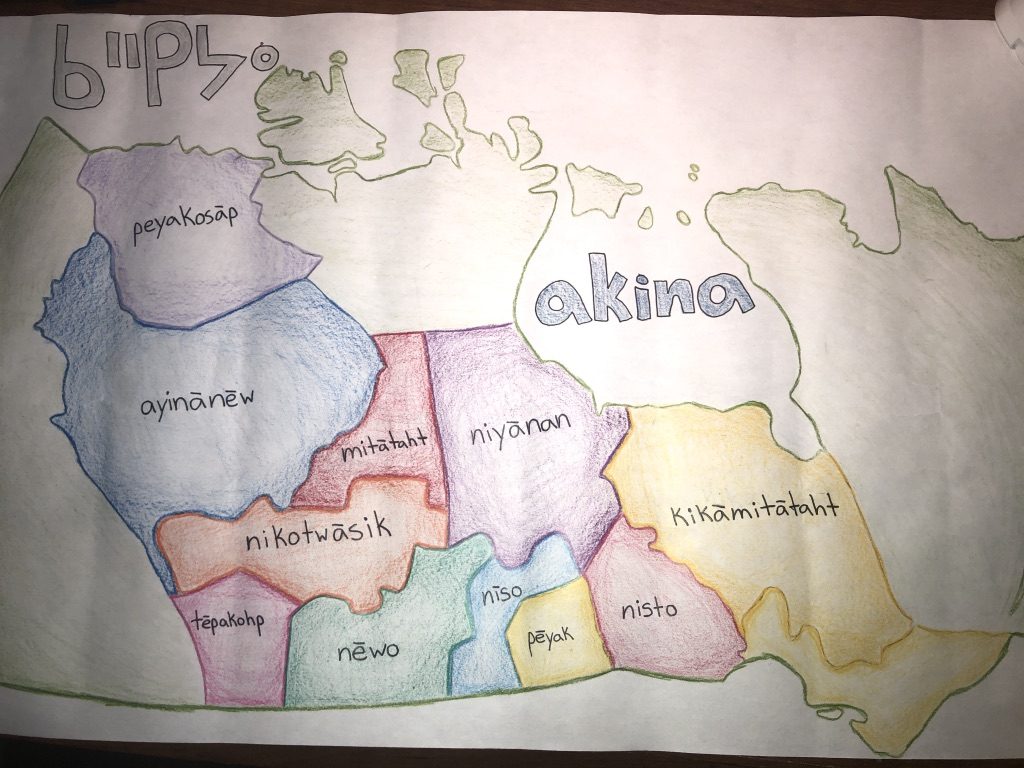Journey to Reconciliation
Throughout ECS 100, we talked lots about Indigenous philosophies and values that have been altered because of European colonization, and how that as effected teaching. To showcase our learning, we were asked to complete a project representing our personal journey to reconciliation, and what we have learned while talking about reconciliation during our lectures. One aspect of this project was to include a visual representation and a reflection of our representation.

For my visual representation, I chose to create an art piece representing that all Canadians live on the unceded territories of Indigenous Peoples. We should continuously work to acknowledge the land on which we work, live, and play. My project includes a map of Canada with the treaties outlined and numbered in Cree, with the words ‘all’ and ‘entire’ written in Cree and Ojibway. During our lecture on the perspectives of reconciliation, one of the videos presented that “everyone steps foot on traditional ground” which was said by Charlene Bearhead, former Education Leader for the Truth and Reconciliation Commission. This point resonated with me and helped my understanding of reconciliation. We live on treaty territory and we all play a role in healing the corruption of the past, even if you do not feel a personal connection towards reconciliation.
I sometimes find myself feeling ignorant on the subject of reconciliation in regards to my personal role in reconciliation. I am a settler on Indigenous land and I must actively take part in the process of reconciliation. Through my project, I want to express how treaty territory encompasses the majority of Canada and that we must acknowledge the traditional land of which we are on. Everyone is connected in the journey of reconciliation based on the fact we all live our lives on the land of First Nations peoples, which is shown in my aesthetic representation through the emphasis of the treaties in Canada. Their land has been greatly altered and irreversibly changed to fit colonial standards and has affected First Nations people’s lifestyles immensely. That is why it is important for everyone to take part in reconciliation. Even treaties themselves represent how European settlers controlled and regulated the land of First Nations people, even though the land already belonged to indigenous people. With knowledge of the horrible treatment of Indigenous people in Canada’s past and present, as well as acknowledging how everyone can help mend the damaged relationships between Indigenous people and the people who took their land, reconciliation is possible.
Through the lectures and reading materials assigned, my understanding of what First Nations people have endured, and still experience to this day, has expanded immensely. It is crucial that non-indigenous people acknowledge the wrongdoings of the past, recognize the privilege they were born with and work towards honoring the culture which has been undermined for the last century.